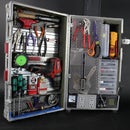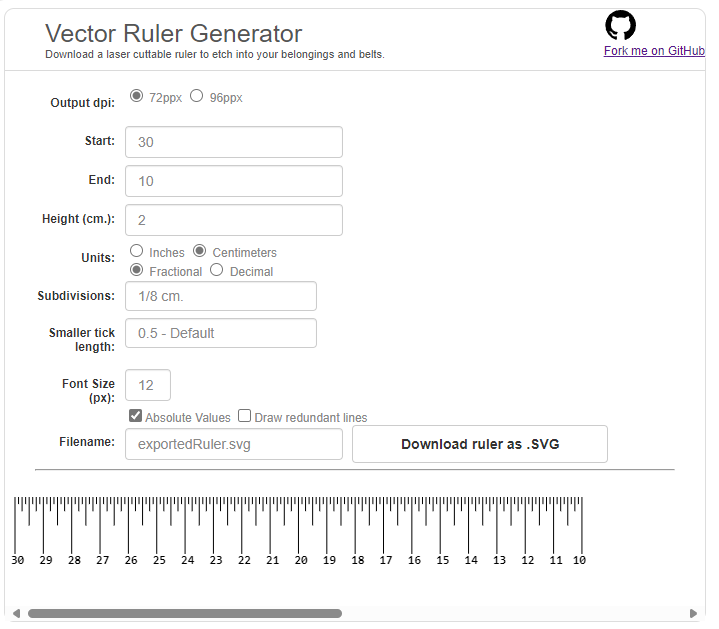Introduction: Measuring Tape/Belt — a Pocket Reference for Your Waist
The belt. Many of us wear them every day. I measure things nearly every day. There was a time in my life that I carried a 6'ft. tape measure with me every day, but I found it cumbersome. One day, when playing with a laser cutter it occurred to me that the belt is prefect real estate for a short tape measure.
Similar to my Ruler Comb, this is an item carried every day that has un-utilized potential as a reference.
Step 1: Procure Supplies
You will need a belt.
This is the most important decision. I usually own belts for about 5 years before they become to stretched or ratty for daily use. I found trying to procure a nice leather belt online to be a very frustrating experience.
Etching your the belt you may wear everyday has several advantages- You already like it, and it is already stretched. I found that in the first month or so of wear my belts stretch as much as an eight of an inch (~3mm).
Color is an important consideration, as black etching on a black belt is hard to read.
For this iteration, I went with a Carhartt Brown Journeyman Belt because it seemed like it would be a stiff and sturdy ruler with a nice color for etching. It is not soft, so there is a comfort trade-off. I bought a size about 10" bigger than my waist so I would have a scrap to test on.
Non-leather belts have a high risk of containing PVC or other laser-unfriendly polymers that can damage your brain when etched. If you need to check if your belt has PVC, there is a really neat 'burnination' test done with a blowtorch and a piece of copper, outlined on Vimeo by Zach Hoeken.
Step 2: Procure Laser Access
Laser cutters are becoming more and more common, but are certainly the hardest thing to get a hold of for this project.
I have the fortune to have access to a 36"in. x 24"in. laser cutter, which allowed me to etch nearly the entire length of my belt. Interestingly, in the two months I have been wearing it, I have not measured anything longer than a foot. A smaller ruler is probably fine for most applications.
There is almost certainly a friendly business or hackerspace near you with a laser cutter. More and more high schools have them in their shops, sign makers often have them too. There is a multitude of web services as well, but you would have to figure out how to send them your belt.
Photo by: Tod Kurt, A Laser Cutter at Crash Space, a community hackerspace in Los Angeles.
Step 3: Generate Ruler
I started my ruler with a two-dimensional ruler I made with my very own Online Vector Ruler Generator
I then took the SVG into Adobe Illustrator and changed the font and added a ton of reference data.
You have lots of great software options for 2D vector editing.
Illustrator has a free 30-day trial, and is a industry standard for vector manipulation. It has a steep learning curve, but is quite capable.
Inkscape is open-source and free. It is the tool of choice for wikipedians and open-source aficionados. Cross-platform, steep learning curve.
AutoCAD is an option, but not a very friendly one.
An online editor called Method Draw is very clean, free, and simple to use for SVG manipulation.
Step 4: Compose Your Belt!
It took me quite a bit of contemplation to decide what info to put on the ruler.
As anyone who does not live in the United States is all too quick to point out, American unit conversion can be somewhat strenuous. How many teaspoons in a gallon?
I learned a few facts in making this reference:
- The inch was actually defined in millimeters in July of 1959. I was expecting 2.54 cm per inch to be an approximation, but alas, it is law.
- I learned that there are more SI prefixes than I ever imagined.
- I learned JavaScript in order to make the ruler generator.
Not being the strongest at math, I also drew a little mandala-type thing to help me do electrical math. Point at the thing you want, and find the option that is the things you have. Plug in your knowns, and bam! You have your mystery solved.
I added my contact info in the unlikely event I lose my belt.
Attached is every major file format that supports vectors.
Step 5: Etch It!
Throw the belt in a laser cutter!
Etch it to your hearts content.
Instructions will vary based on the laser you gain access to. I used vector type shallow cutting, as i like the way the thin lines look. Raster will work as well, and possibly be faster.
I put my belt in the cutter diagonally, as to maximize the cuttable area. I used a sheet of cardboard for all my tests to make sure everything lined up and looked nice. The final belt was as accurate as the ruler I tested it against!
Step 6: Wear It!
Impress your friends!
Step 7: Use It!
Measure everything!
If you make one, put a picture in the comments!














